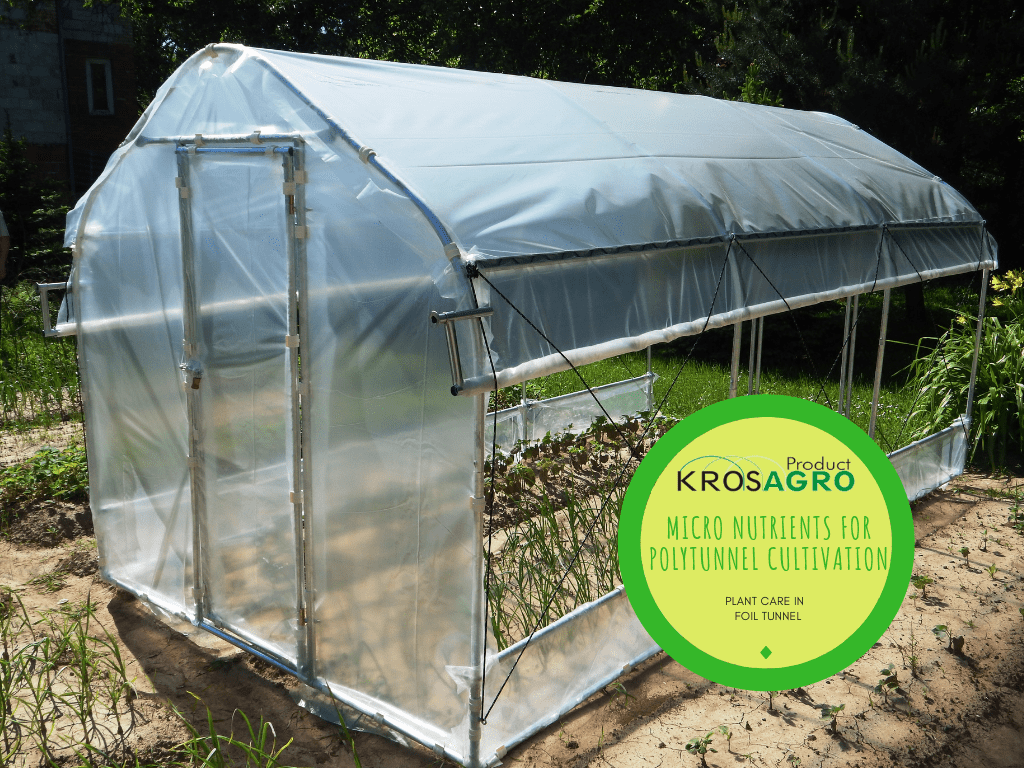Micro nutriments for polytunnel cultivation are necessary to ensure optimal development at each stage of growth. In addition to the macro elements required for basic growth processes, other elements are also required for successful harvests. Although their role is secondary, it should be noted that they have a significant impact on the absorption of other nutrients. They influence strength, aesthetics and health of plants. In this Krosagro article, we will describe the elements identified as micro nutrients.
Contents
Micro nutriments for polytunnel cultivation
Some micro nutrients may be present in minimal amounts, their concentration rate may be marginal. Those affecting yield are manganese, zinc, boron and molybdenum. Regarding ornamental plants, iron will be important as it contributes to the intense coloring of plants. From an aesthetic point of view, it is an essential characteristic for trade, which indicates a good development of the plant.
Manganese
Intervenes in the accumulation as well as the assimilation of phosphorus and iron. Participates in photosynthesis, gas exchange (respiration) and chlorophyll production. Absence of this element makes plants vulnerable to changing atmospheric conditions and more susceptible to disease. There is a deficiency when one can notice mottling on young leaves. They lose their pigments, turn yellow with time, even if the innervation is intact.
Iron
Has an effect on tissue respiration, photosynthesis process as well as production of chlorophyll. The fact that it is responsible for the development of plants and crops makes it essential for fruit growers. It is common for fruit trees and shrubs to suffer from iron deficiency. Therefore, season after season, doses should be administered for a more efficient growth. Deficiencies are diagnosed with chlorosis, which occurs when leaves turn white and yellow.
Copper
Vegetables in a garden tunnel, are particularly sensitive to this deficiency. The element helps plants to withstand high temperatures especially in times of drought, and fight fungi and bacterial diseases. It actively participates in the development of green mass. Dried leaves, treetops and faded flowers suggest a shortage of copper.
Zinc
A standard amount allows plants to absorb nitrogen efficiently. It plays a role in the process of vitamin synthesis and in the transformation of carbohydrates collected by crops. A balanced concentration rate has a positive effect on the amount of proteins and sugars contained in plant mass. Some enzymes need zinc to regulate breathing. A plant lacking this element will be stunted, brittle, deformed on the edges with a yellow or white surface (chlorosis).
Boron
One of the factors affecting yield is its resistance to low temperatures and frost. The element is of great importance for plants that produce fruits and flowers. It stimulates flowering, fruiting and seed formation. It stimulates the development of absorbent hairs and development of cells (division, growth and formation). Falling flowers and poor flowering reveal a shortage of boron. Symptoms may also be a deformed and undeveloped root system. Fruits fall before maturity and leaves are twisted.
Molybdenum
Increases plant resistance to pathogens and improves the way they cope with drought. A satisfactory rate in plants allows optimal production of chlorophyll. It is also important in the conversion of phosphorus and nitrogen. The yellowing of distorted leaves and their death demonstrate a deficiency of molybdenum. The oldest leaves turn a light green color, new shoots misshape while flowers fall during ripening.
Importance of micro nutriments in plant production
Although relegated to a secondary role, these elements act as activators for certain enzymes and support metabolic processes. They enable important functions of metabolism to proceed without disruption, whereby crops will properly sequence the various stages of growth leading to harvest. The biochemical processes that influence them are important. Absence or deficiency increases the risk of infection of crops by pathogens of viral or fungal origin. In the case of ornamental plants, they play an important role in the visual appearance of plants.
How to restore the lack of micro nutriments in crops?
Foliage fertilization is the most common method. Leaves absorb nutrients, assigning them to specific tasks. Nourished plants then mature fully. There is a whole range of products on the market, dedicated to species, varieties and specific crops for polytunnels. It should be remembered that doses should be adjusted according to crops’ needs and requirements . An excess can be as detrimental as a shortage. Therefore, it is useful to analyze the soil from time to time, to know the exact content of the substrate in terms of macro and micro nutriments.
